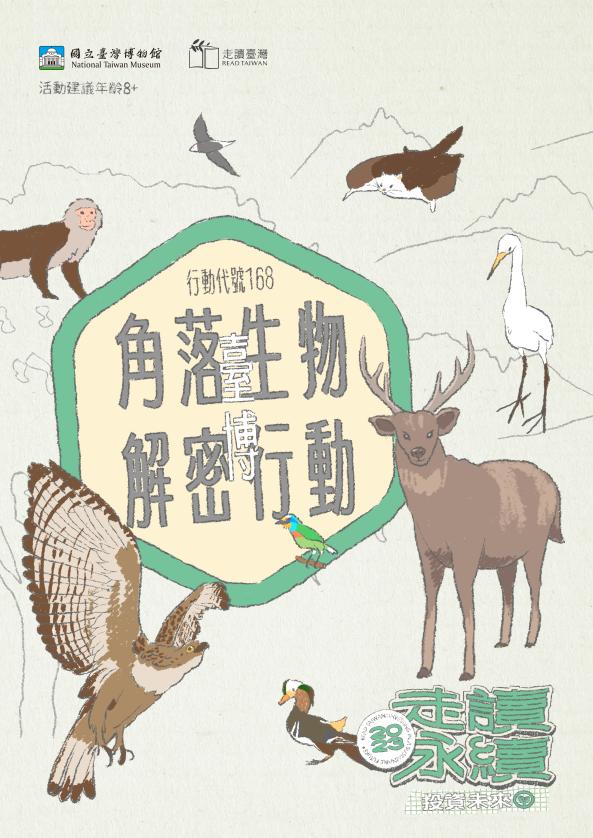| Number of Sessions |
|---|
|
Tuesday-Sunday: 9:30 am-5 pm
|
-
 Organizer
:
National Taiwan Museum
Organizer
:
National Taiwan Museum
-
 Contact Us
:
02-2314-2699
Contact Us
:
02-2314-2699
-
 Ticket Details
:
Full Fare: NT$30 | Half Fare: NT$15
Ticket Details
:
Full Fare: NT$30 | Half Fare: NT$15
So far, the planet Earth has been through at least five mass extinction events, each of which caused great changes to the environment; many species were gone within a short amount of time. However, the few that survived showed the resilience of life, and became the thriving and diverse forms today as time went on. The permanent exhibition “Paleontology Exhibition - Evolution of Life on Earth” at National Taiwan Museum invites everyone to explore this epic of evolution across billions of years through these amazing fossils.
The Prosperous Ocean
Great changes have taken place beneath the vast but seemingly changeless oceans with the time passing by. Life in the oceans had evolved over three billion years before the first creatures left the water, and trilobites, ammonites, nautilids, sea lilies, and fishes marked the prosperity of the ancient oceans, as presented by the numerous fossils in the exhibition.
Rulers of the Mesozoic
After the End-Permian Extinction, dinosaurs played an important role in the ecological system. Following the End-Triassic Extinction, they became the most dominant creatures on the lands of the Mesozoic, including the Huanghetitan, Tarbosaurus, and Velociraptor in the exhibition. Before the birds appeared, pterosaurs were the first vertebrates soaring in the sky. Also, some reptiles returned to the water, such as ichthyosaurs, plesiosaurs, and mosasaurs. These reptiles evolved into various forms under different environments, becoming the rulers of the land, sea, and sky in the Mesozoic.
Dinosaurs and Birds
Dinosaurs emerged in the Triassic. One of them went to another route in the mid-Jurassic and survived the K-Pg Extinction Event 66 million years ago. Eventually, they became the birds soaring in the sky today. Currently, we know that many features or behaviors that are considered to be unique to birds, such as flying, feathers, and brooding behavior, could actually be traced back to dinosaurs as well.
Fossils in Taiwan
The sea level in Taiwan Strait greatly reduced and became a bridge between Eurasia continent and Taiwan, allowing many terrestrial animals to migrate to the island in the Cenozoic. Many terrestrial vertebrates in the Pleistocene were preserved in the area of Penghu Channel as well as in Sinhua Hill, Zuojhen, and the riverbeds of Cailiao River and Yanshui River. They are respectively called the “Penghu Fauna” and “Zuojhen Fauna.” These faunas of different regions represent the environment of Taiwan in different times.
Diverse Animals in Taiwan
Taiwan is an island boasting extremely high levels of biodiversity. The exhibition, through the light screen of “Diverse Animals in Taiwan” and the whale specimens hung above the platform in the 2nd floor, present the representative mammals and birds in Taiwan and lead to a peek into the various forms of splendid animals.
Earth Today
To this point, the climate anomalies caused by the tremendous amounts of greenhouse gas and pollution arising out of human activities have changed the ecology of the Earth, engulfing many species into a crisis of extinction. In Taiwan, there are also many creatures facing challenges of survival because of cosmopolitan development or consumption. In this exhibition, it is hoped that we can introspect on impacts upon the environment brought by human beings as well as our relationship with the nature.
| Attachment(s) | Description of Attachment(s) |
|---|---|
| 展覽摺頁 | 展覽摺頁 |
| Exhibition Brochure展覧会のパンフレット | Exhibition Brochure展覧会のパンフレット |


